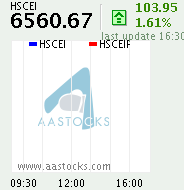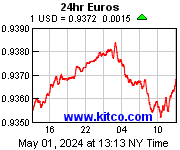Is there no REVERSE --- "Stagflation" ?

Appropriations Committee of the U.S. House of Representatives has just announced an 825 billion U.S. dollars economic stimulus plan --- "American Recovery and Reinvestment Plan" (ARRP) to finance the expenditures of the infrastructure and clean energy investment as well as to provide assistance to the persons badly hit by this economic downturn.
The United States Government launched the so-called "quantitative easing" monetary policy since last December in an attempt to resolve its economic problem. "TARP" is an abbreviation for the "Troubled Asset Relief Program" which is the largest part of the United States' so-called "$700 billion bailout plan. It is a program to purchase assets and equity from financial institutions in order to strengthen the financial sector. In an attempt to lower the long-term interest rates and further leads mortgage interest rate down, The U.S. Government trys to buy back a large amount of bonds and commercial papers from the market directly.
As the president-elect Obama came to power he should realize his promise to keep a substantial increase in tax-cuts or tax-rebates as well as federal spending. Reportedly the federal debts may reach an astronomical figure of two trillion U.S. dollars just in the year 2009. In other words, the U.S. government may activate a large number of banknote printing to address the crisis. The banking institutions may no longer to hoard their money in vaults. The worse situation of the so-called "liquidity trap" may be reversed then.
Therefore, it is leading to excessive asset bubbles and inflationary rational expectations will be reinforced. People will no longer hoard money and inflation or even hyper-inflation may occur despite the stock market rebound. However, a rebound in commodity prices could foster cost rising in the manufacturing sector too. The wage increase demands prevail and further push the production cost up that drags the long-term economic growth. The 70s' scenario of "stagflation" occurred in the last century will come back again.
Stagflation is a worse situation that we'll experience both economic recession and inflationary spiral. The phenomenon of coexistence of the so-called "stagflation" come once again that we should try to think over the dilemma and the paradox of Keynesian economics! However, the IT innovation nowadays may enhance the flexibility and quicken the right response of the governments and financial institutions. That's what I wish.
The United States Government launched the so-called "quantitative easing" monetary policy since last December in an attempt to resolve its economic problem. "TARP" is an abbreviation for the "Troubled Asset Relief Program" which is the largest part of the United States' so-called "$700 billion bailout plan. It is a program to purchase assets and equity from financial institutions in order to strengthen the financial sector. In an attempt to lower the long-term interest rates and further leads mortgage interest rate down, The U.S. Government trys to buy back a large amount of bonds and commercial papers from the market directly.
As the president-elect Obama came to power he should realize his promise to keep a substantial increase in tax-cuts or tax-rebates as well as federal spending. Reportedly the federal debts may reach an astronomical figure of two trillion U.S. dollars just in the year 2009. In other words, the U.S. government may activate a large number of banknote printing to address the crisis. The banking institutions may no longer to hoard their money in vaults. The worse situation of the so-called "liquidity trap" may be reversed then.
Therefore, it is leading to excessive asset bubbles and inflationary rational expectations will be reinforced. People will no longer hoard money and inflation or even hyper-inflation may occur despite the stock market rebound. However, a rebound in commodity prices could foster cost rising in the manufacturing sector too. The wage increase demands prevail and further push the production cost up that drags the long-term economic growth. The 70s' scenario of "stagflation" occurred in the last century will come back again.
Stagflation is a worse situation that we'll experience both economic recession and inflationary spiral. The phenomenon of coexistence of the so-called "stagflation" come once again that we should try to think over the dilemma and the paradox of Keynesian economics! However, the IT innovation nowadays may enhance the flexibility and quicken the right response of the governments and financial institutions. That's what I wish.
P.S. : According to the newly published webpage of Paul Krugman, the rational inflationary expectation of Americans is still low as indicated by the very narrow TIPS spread at the current stage.
----"These days I’m looking at the TIPS spread: the difference between nominal US bond rates and rates on Treasury Inflation-Protected Securities. This spread is an indicator of expected inflation. And what it shows isn’t good." By Paul Krugman
http://krugman.blogs.nytimes.com/2009/01/16/the-tips-spread/
See my Chinese blog on the same issue at: http://wongtc.blogspot.com/2009/01/blog-post.html
See my Chinese blog on the same issue at: http://wongtc.blogspot.com/2009/01/blog-post.html











